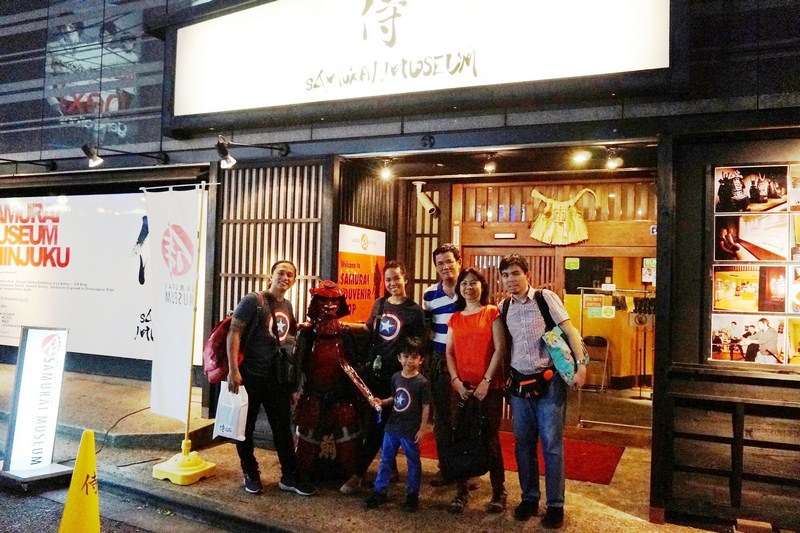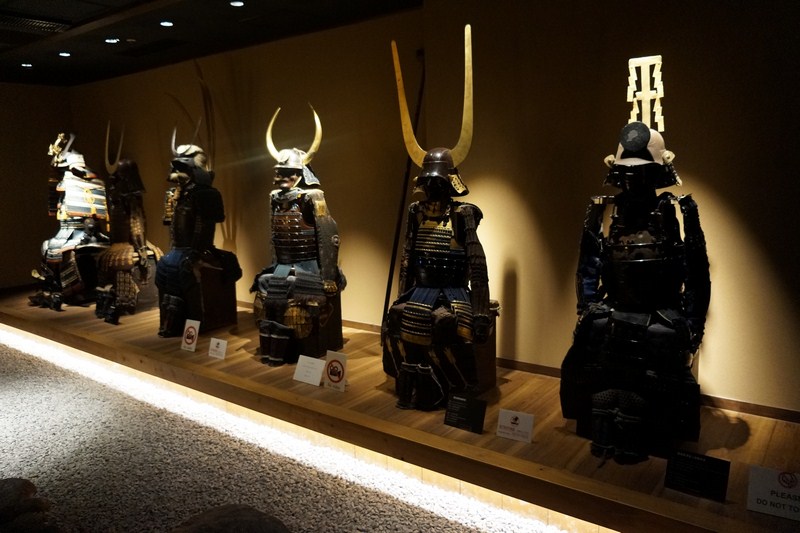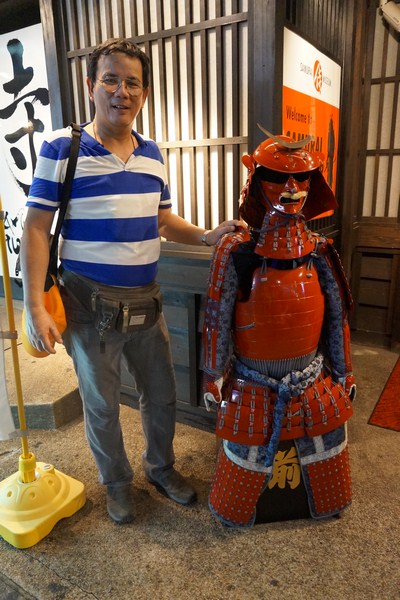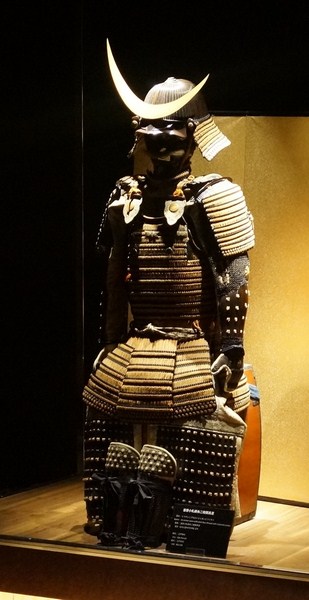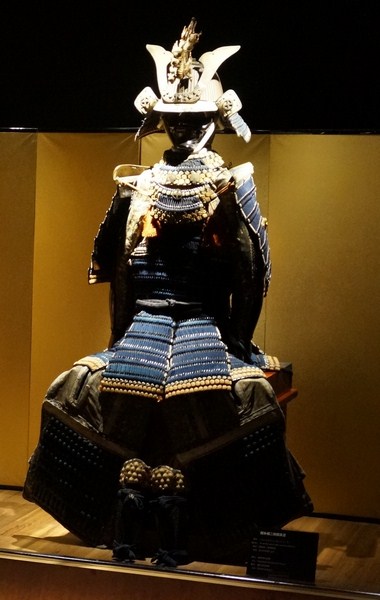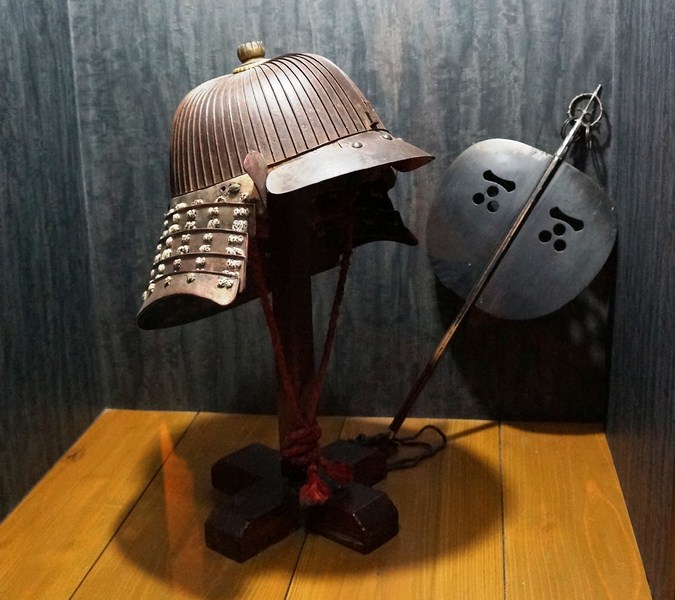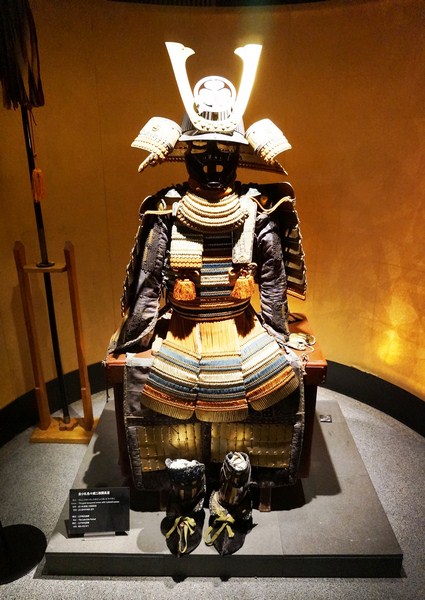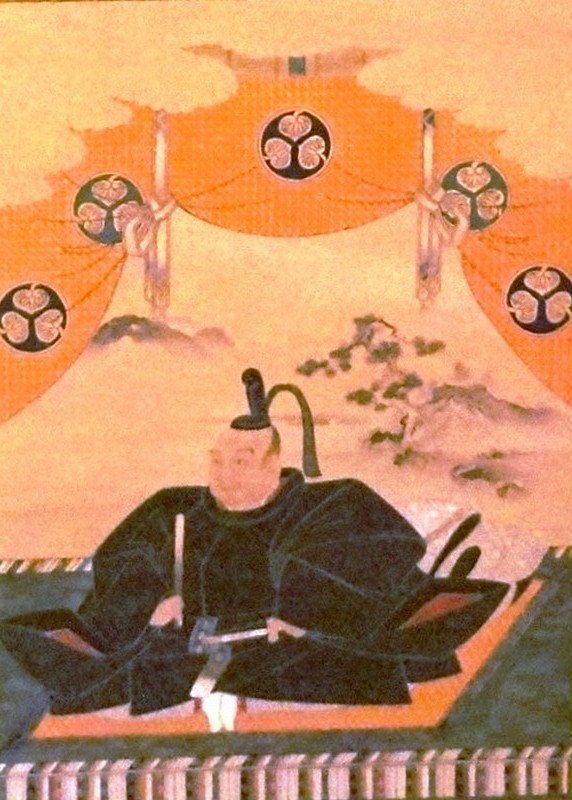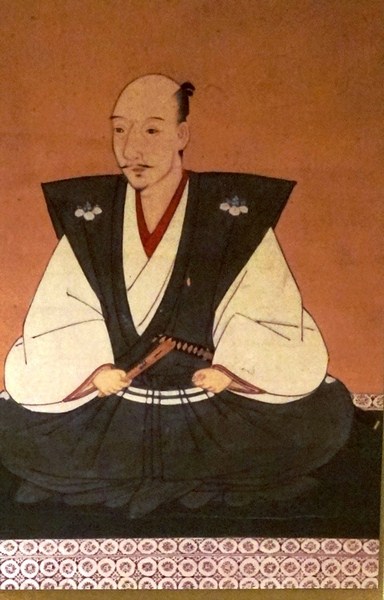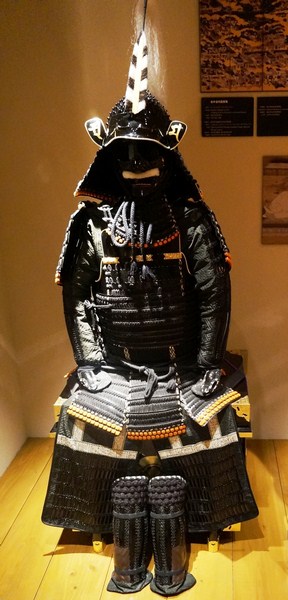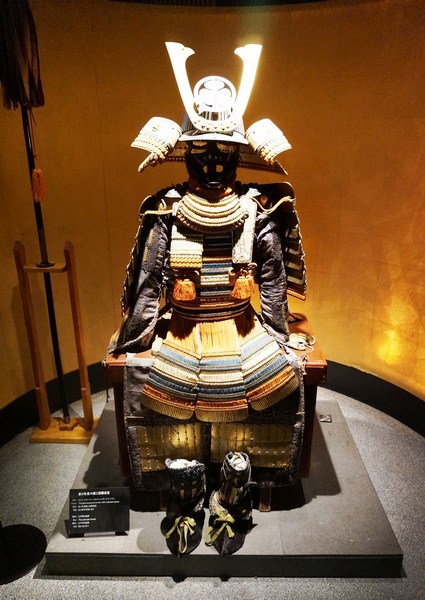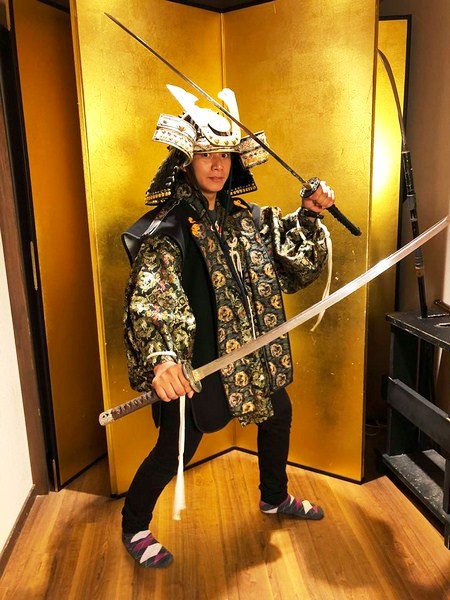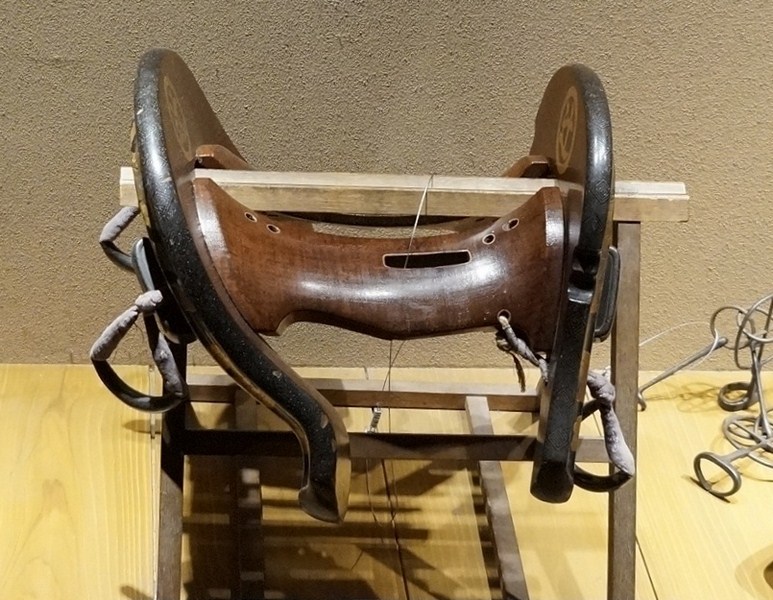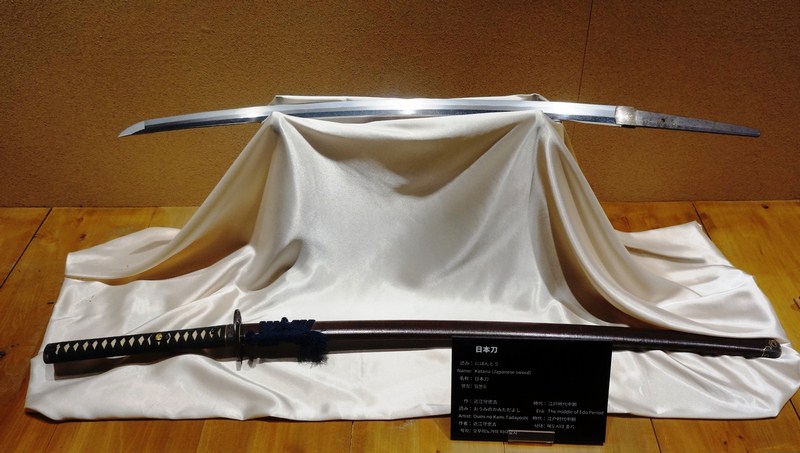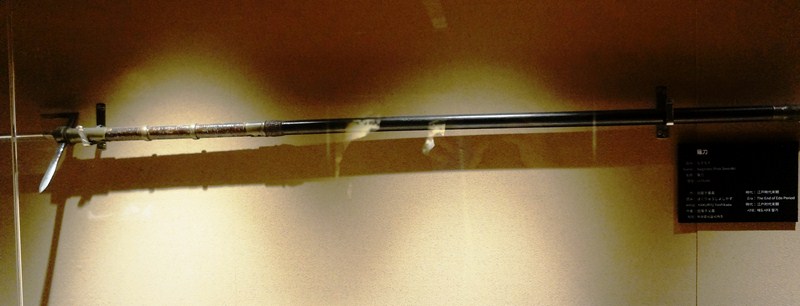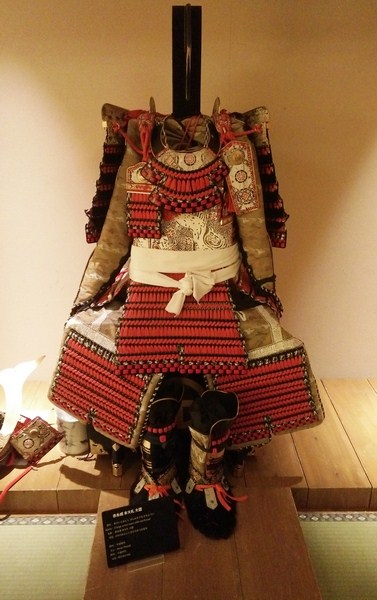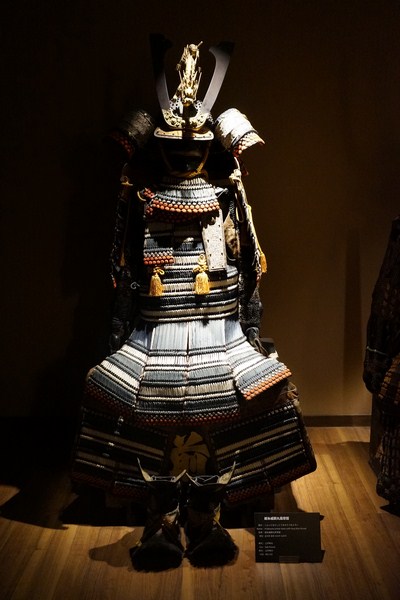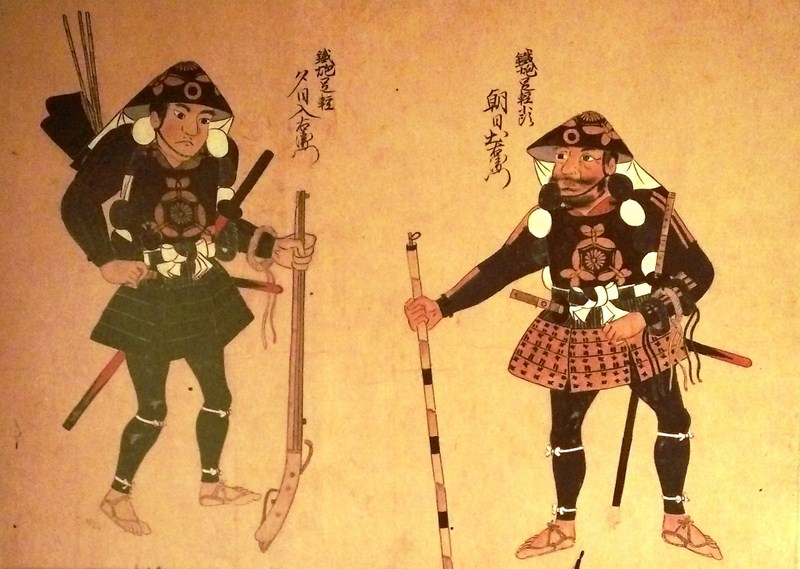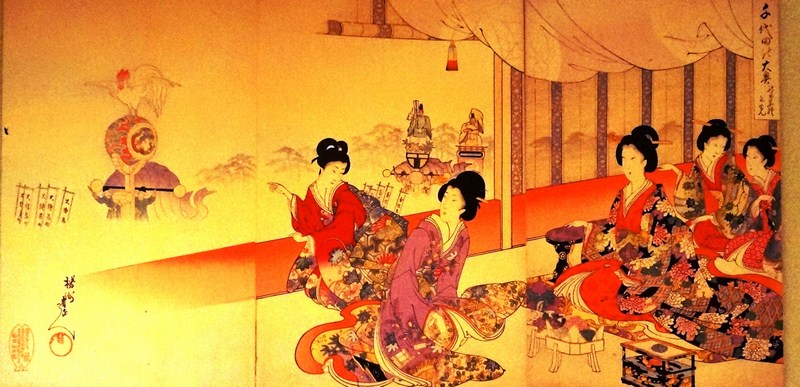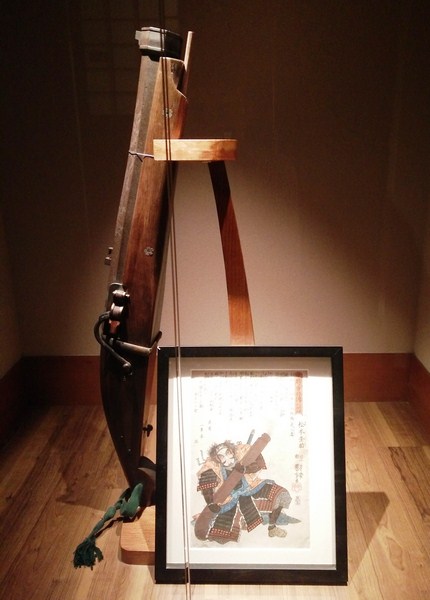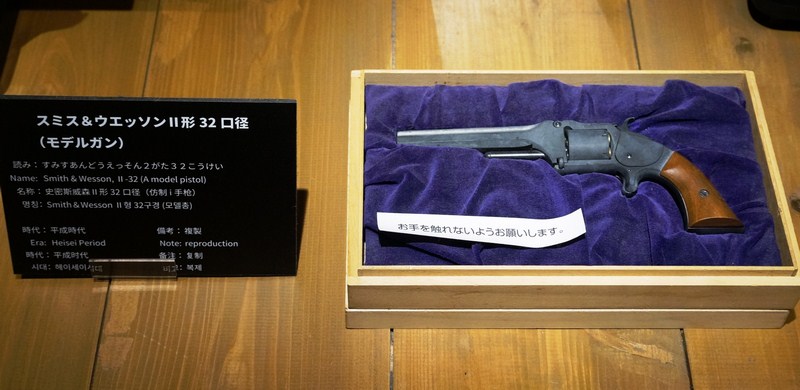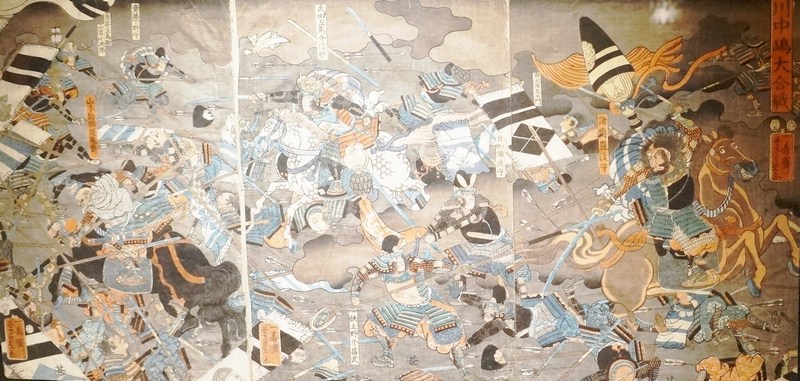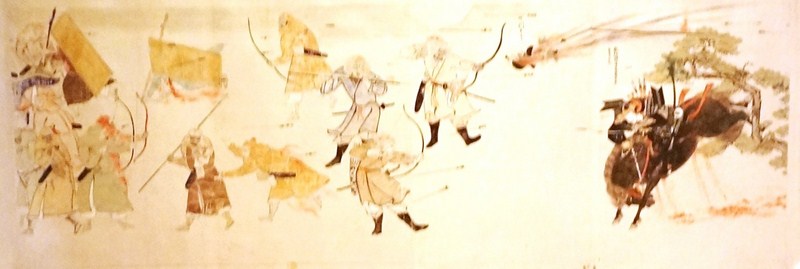The Samurai Museum (侍ミュージアム), an urban entertainment museum centrally located in the Kabukicho district of Tokyo’s Shinjuku (an area known more for its nightly entertainment than cultural facilities) ward, displays, under dramatic lighting, more than 70 examples of samurai armor, kabuto helmets and weapons gathered from Japanese and foreign collections.
The rooms here are as Japanese as the museum creators can make it, with tatami mats, paper screens, very atmospheric lighting, Japanese music, etc..
The museum has two areas. At the ground floor is the gift shop, the reception desk and an array of very beautifully arranged rows of yoroi sets of armor, mostly from the Muromachi (1336-1573) and Edo (1600-1868) periods.
Facing them is a traditional painting depicting the Battle of Sekigahara. As soon as we entered the museum, we were transported into the world of Japan’s samurai culture.
At the first floor (or “second floor” in Japanese) are six smaller areas specializing in the Kamakura period.
On display are swords and other bladed weapons, kabuto helmets, yoroi armor, matchlock guns and the passage to the modern era.
The enthusiastic English-speaking guide first demonstrated a number of samurai sword moves and, for good measure, lets out a blood-curdling scream. The detailed explanation included information on the weapons on display.
The actual number of exhibits wasn’t that big but it was enough to illustrate some of the main points of the history of the samurai.
We learned the meaning of the word “samurai;” what differentiates a samurai’s katana from other kinds of swords; that guns were also used in Japan during the time of the samurai; what was bushido (the “way of the samurai”); which animals and colors were thought to represent strength and why the samurai shave their heads.
The guide also cleared some basic misconceptions regarding the samurai. We learned that samurai warriors used disposable blades (after a few strikes, the blade was no longer sharp); that the sword was not “the soul of the samurai” (the bow and arrow was) and how important firearms were for the samurai who actually went to war.
We also learned what was happening in Japanese history at the time of the rise of the samurai, including the Mongol invasion of Kyushu in the 13th century. We found out more about Japan’s three most famous samurai (Oda Nobunaga, Toyotomi Hideyoshi, and Tokugawa Ieyasu); learned what kind of armor each wore to battle and how the style of each has been expressed through haiku poetry.
Even for someone who is somewhat familiar with the subject, some of the exhibits were indeed very interesting and friendly to the casual visitor, especially to us who came from abroad (about 60% of the museum’s visitors are Westerners, 35% are Asians and only 5% are Japanese).
The exhibitions displayed in the second floor were in chronological order and so, to easily understand and appreciate the artifacts, each item on display had detailed descriptions written in English, Chinese and Korean.
The super popular Samurai Photo-Shooting corner was the piece de resistance of the tour. Jandy and Bryan had their pictures taken wearing a samurai helmet (kabuto), battle coat (jinbaori) then wielding a sword and trying their hands in Samurai cosplay. Cheska wore a kimono. Unfortunately, there were no outfits for Kyle.
Overall, the Samurai Museum was a fun way for young people and parents to spend a couple of hours to further understand what it truly means to be a samurai, one of the most well-known icons of Japanese culture, rather than for serious scholars of samurai culture and history.
As it was already late in the evening when we visited, we missed the 10-15-min. special afternoon performance of a quite intense and realistic sword battle featuring the instantaneous drawing of the sword (if you’re lucky you can catch a glimpse of a ninja). Started since March 12, 2016, it was performed by professional actor Shinichiro Matsuura. Show times were 2PM, 3PM, 4PM and 5PM.
Every Tuesday and Thursday, calligrapher Ms. Shiho Kurabayashi, designer of the logos for both the movie Sadako 3D as well as the Japanese Aerospace Exploration Agency, will give Japanese calligraphy lessons, an art form practiced, through the centuries, by samurai and nobles. Ink, paper and writing brush will be provided.
Visitors who will take this course will learn the fundamentals, including how to hold a brush, the right posture for writing calligraphy, how to write three kinds of letters used in Japanese language (Hiragana, Katakana and Kanji), the meanings of some Kanji characters, and your name in Japanese letters. Afterwards, they can take their work home as a souvenir.
Started since December 17, 2015, the approximately 1-hour lecture starts at 7PM. Shiho taught Japanese calligraphy (shodo) at an elementary school in the U.S. She won a prize at Mainichi Shodo Exhibition and a special award at Taito Shodo Exhibition in Tokyo. Her prize-winning pieces also appeared on the Saitama Newspaper.
A Japanese sword lecture is also presented by Mr. Paul Martin, former curator at the British Museum and an expert on samurai swords. He will teach you about Samurai history, as well as how to handle swords correctly. The talk lasts about 45 mins., with 45 mins. for viewing and additional questions.
For an additional fee of JP¥32,000 – 44,000 (depending on the armor chosen), visitors can opt for a “Sengoku” style, fully armed, photo shoot which includes photos as well as a CD-ROM containing the images.
The Gift Shop offers a full range of original samurai gift items (authentic Japanese swords, sword stands, sword fittings, samurai armor, etc.) and samurai-themed souvenirs (dolls, replica swords, etc.)for sale as well as kitchenware, Japanese cooking knives and T-shirts.
Samurai Museum: 1/F Eiwa Dairoku Bldg., 2 Chome-25-6 Kabukicho, 160-0021, Shinjuku, Tokyo. Tel: +81 3-6457-6411. Admission: JP¥1,900 (adults) and JP¥800 (children under 12 years of age). Children 3 years old or under enter free if accompanied by an adult.
The sword show and samurai costume are included with museum admission. Open daily, 10:30AM to 9PM. (No admissions after 8:30 PM). Admission to the Japanese sword lecture (starting time: 7PM)and calligraphy lessons is JP¥5,000 (museum admission included). Advance reservation of two or more required. Website: www.samuraimuseum.jp. Gift Shop email: info@samuraigift.jp. Facebook: www.facebook.com/samuraimuseum.jp.
How to Get There: The museum is an 8-min. walk from Shinjuku Station’s East Exit on the JR Yamanote Line, a 4-min. walk from Seibu Shinjuku Station, a 6-min. walk from Higashi-Shinjuku Station Exit A1 and a 10-min. walk from Shinjuku Sanchome Station.

